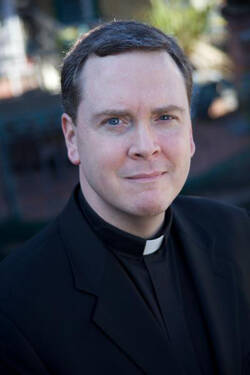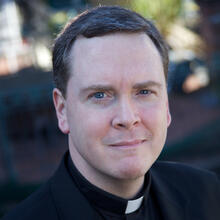I lived in London for nearly three years before I set foot in Westminster Abbey. Since the 16th-century English reformations, the Abbey has been the most prominent and cherished place of worship in the Church of England. Americans will know the Abbey from television coverage of the funeral of Princess Diana and the wedding of her son Prince William. The place is a curious admixture of church and state, Catholic and Protestant, self-adulation and transcendent beauty. As a Roman Catholic, I experienced an unexpected, almost visceral parochial anxiety as I entered the church, as if my body contained the relics of centuries of fear and resentment between Protestants and Catholics. This should not have come as a surprise, I suppose. Self-inflicted wounds to the body of Christ continue to gape and mar even today.
As an American, I was uneasy with the entanglement of church and state in the Abbey’s furnishings and ceremonial. Americans have a cultivated aversion to this sort of thing. We’ve made a paradoxical religion out of the separation of church and state, a situation that is itself the historical progeny of what is represented in Westminster Abbey. While I harbor some reservations about R. R. Reno’s essay in this issue, I concede his basic point that the next phase in that story will involve “a shift from individual freedom from religion to a vision of society as a whole free from religious influence.” That would be tragic.
The separation of church and state is both prudent and necessary, but the separation of the church and the political is inconceivable. For my part, I am more comfortable these days with the church and the state sharing a common space, precisely because “the city of God is not so much a space as a performance,” as William T. Cavanaugh has written. In a way, then, I rather appreciate the proximity of church and state in the Abbey: it is an opportunity for the truth of revelation to scandalize humankind’s nationalist fictions.
Yet does that happen? Throughout my visit, I couldn’t help but wonder whether the Abbey was enacting the “comedy” of the city of God or the “tragedy” of the city of man. The monuments to the tragic figures of empire share cherished space with those to the equally tragic figures of a gloomy modernity. In some ways, the Abbey has simply swapped one metanarrative for another. Yet is either story truly inspired by, indeed authored by, the Gospel? I wondered whether an ecclesial body so “dominated by and structured on the principles of liberal tolerance,” as Joseph Ratzinger once wrote, “in which the authority of revelation is subordinate to democracy and private opinion” is fully capable of publicly bearing witness to the obviously countercultural imperatives of the Gospel.
The eucharistic service in the Abbey was beautiful. It was not simply the lovely music or the fine liturgica that made it so; it was the fact that an in-breaking of the Holy Spirit, a divine comedy, was being enacted right there amid the more prominent relics of humankind’s tragic scheming. In front of the monument to George Canning, the imperial prime minister (who, the monument tells us without concern for Christian humility, rose “by his own merit”), and just 100 feet or so from Ted Hughes in Poets’ Corner (also a place not overly concerned with Christian humility) there was this in-breaking of Christ, a moment when the temporal was touched by the eternal, a moment of incarnation. Yet for all its beauty, I couldn’t help but wonder whether this moment was the “scandal” it should have been, whether it was really lifting our gaze from the Abbey’s monuments to faded and ill-sought glory, to the living and eternal memorial of the glorified Christ who was now among us.








